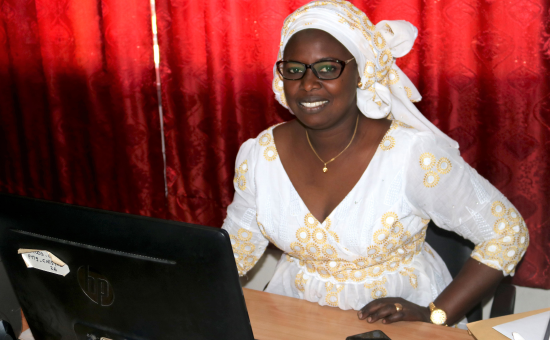
10 May Enhancing Senegal’s Human Resources Information System Improves Health Services in Keur Massar
The Keur Massar Referral Health Center serves a population of more than 285,000 residents in its health district, many of whom seek services after having been referred from one of eight affiliated health posts. One of the center’s main functions, since opening in 2010, is to care for all patients with medical-surgical emergencies. However, a lack of skilled health care workers has left the center unable to provide these services.
“Since its opening, the Keur Massar center has referred all patients requiring surgery, including expectant mothers, to large hospitals in Dakar due to a lack of adequate personnel for the operating room,” says Thiané Sow, the administrative assistant in charge of managing the human resource information system (iHRIS) at the Keur Massar Referral Health Center for the past three years.
Ensuring the availability of skilled personnel where they are needed has been a chronic challenge in Senegal’s health system, due to a lack of accurate, up-to-date information on the health workforce in the national iHRIS platform. Without data on the numbers, skills, and locations of health workers, the workforce can’t be effectively deployed or managed. USAID’s Human Resources for Health in 2030 program (HRH2030) has been working with Senegal’s Ministry of Health and Social Action since 2017 to strengthen the iHRIS to improve HRH data collection, analysis, and use for workforce decision-making. And now, the improved iHRIS is being used to ensure the rational deployment and transfer of health workers in support of the country’s overall health objectives—which include improving maternal health.
With HRH2030’s support, Thiané Sow is now using the system as it is intended. “Last year, the Keur Massar Health Center’s gynecologist-obstetrician, concerned about the operating room situation, expressed the need for additional health workers to make the operating room operational. Following this request, the district’s chief medical officer asked for my assistance to identify the available human resources needed to staff the operating room,” says Ms. Sow.
“Having acquired skills with the support of HRH2030 on how to regiser, update, and use iHRIS data, I was able to use the data to identify a midwife, a nurse, and a nurse’s aide who could be made available to the obstetrician,”says Ms. Sow.
Midwife Rosalie Gomis was already working in the Keur Massar Center—although without the requisite skills to specifically support physicians in the operating room, her duties were primarily elsewhere. After a two-month practical internship in post-operative resuscitation and operating room skills at Pikine Hospital, she returned to the Keur Massar Center and began working in the operating room.
With the other two workers also updating their skills, the Keur Massar Referral Health Center has been fully meeting the district’s surgical needs since August 2020. In its first three months of operation, the unit performed 87 surgical procedures, including 70 cesarean sections.
“If we didn’t have a functional operating room, all these patients would be referred to other hospitals with additional expenses for the center and for the families,” says Ms. Sow.
Midwife Gomis adds, “iHRIS has enabled us to optimize the human resources available to improve health care and increase our patients’ satisfaction.”
Photo: Top: Ms. Thiane Sow is in charge of managing the iHRIS at the Keur Massar Referral Health Center. Above: Rosalie Gomis, midwife in the health center’s post-op unit.





